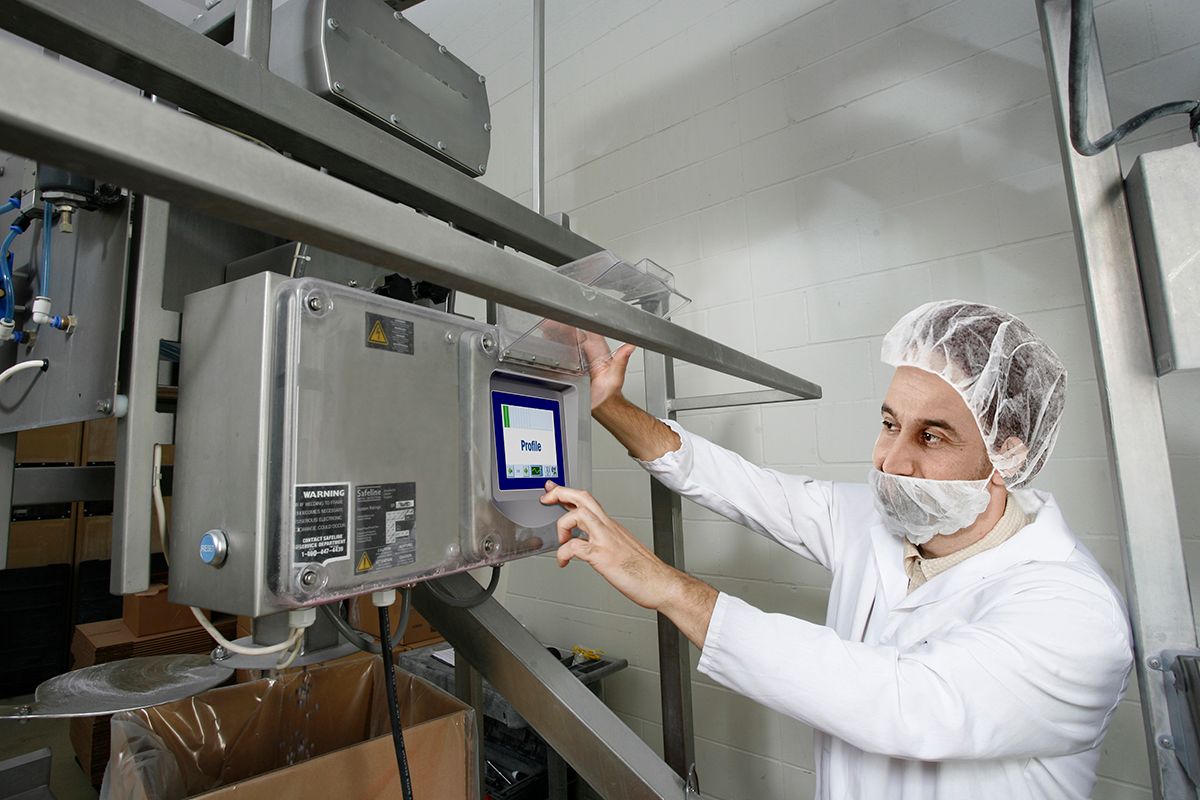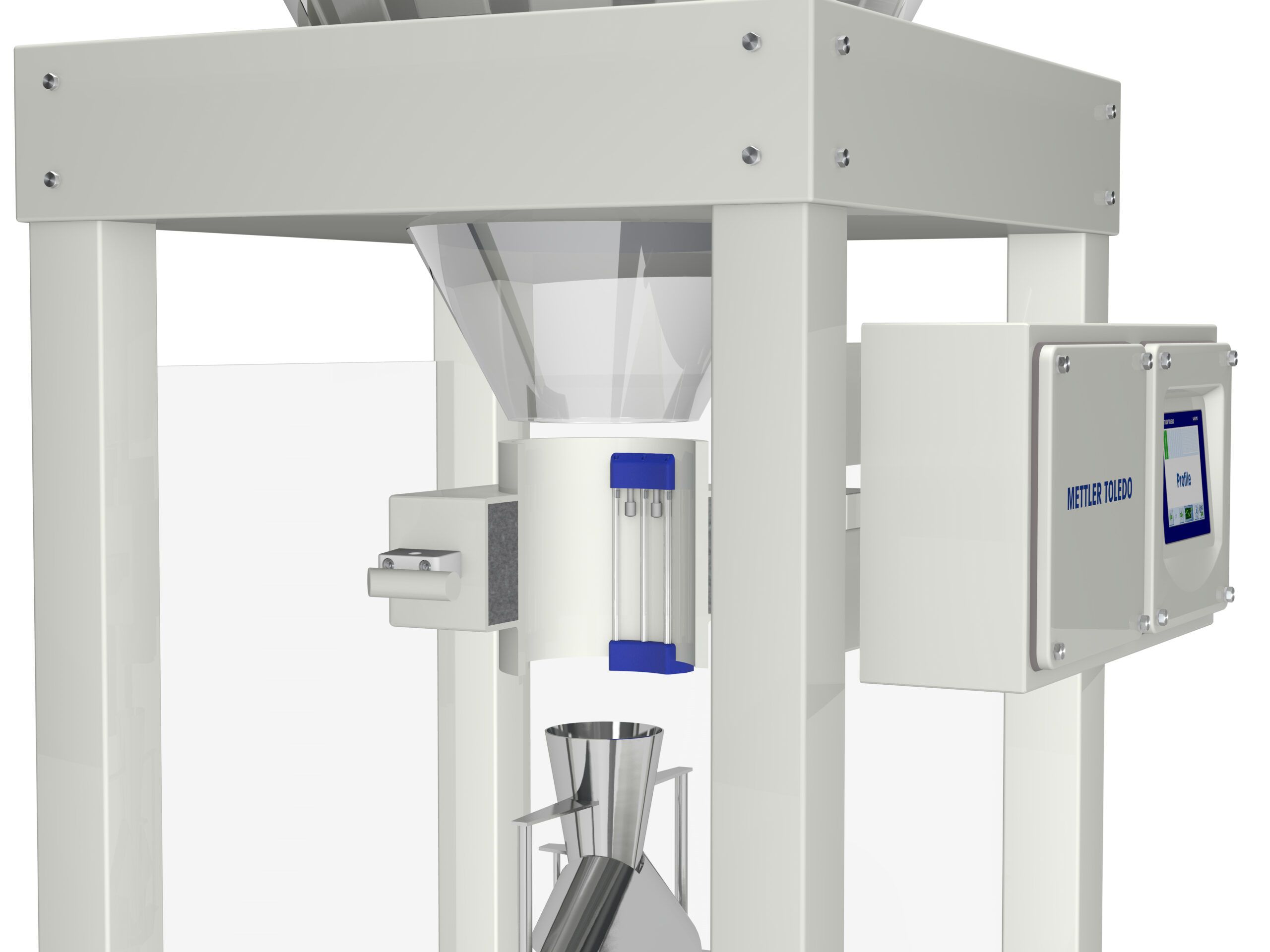Keeping Food Safe with Metal Detection Systems: Protecting Food
Metal Detection. The words alone offer a semblance of reassurance, don’t they? Any manufacturer worth their (metal-free) salt knows that by installing metal detection systems, they are working their way steadily towards a safer, more productive environment. However, what exactly does a metal detector do and how does it effectively protect food – and brands – at a time when it is most needed? Rob Stevens, Market Manager, Mettler-Toledo Safeline Metal Detection explains more.
Keeping Food Safe
The food industry has witnessed a surge in food recalls in recent years. In the EU, for example, food recall notifications were up by 25% in 2021 compared to 2020[1], emphasising the need for robust safety measures. These recalls can not only jeopardise consumer health but can also damage brand reputation and result in legal liabilities. Factors contributing to metal contamination include equipment failures or breakage, inclusion in raw materials (e.g. barbed wire, fishhooks, veterinary needles) and human error. Metal detection systems emerge as a guardian, utilising cutting-edge technologies to detect and reject metal contaminants. These versatile systems work across a wide range of food applications, helping to ensure the purity and safety of products, while also complying with industry regulations.
Detecting Metal
Metal detection systems are instrumental in supporting food safety by identifying metal contaminants with exceptional precision. Equipped with advanced sensors, software and sophisticated algorithms to detect small traces of metal, leaving no room for compromise when it comes to consumer well-being.
For example, in the production of packed goods, installed metal detection systems detect potential metal fragments or foreign objects that may have inadvertently entered the processing line. These systems use electromagnetic fields to scan the products, swiftly identifying any metal contaminants and triggering an immediate rejection mechanism to prevent them from reaching consumers.

METTLER TOLEDO Safeline Gravity Fall metal detection system
Similarly, metal detection systems play a crucial role in the meat processing industry. Highly sensitive sensors can detect metal contaminants, such as stray metal fragments, hypodermic needles, shards from knives or tiny metal staples that may have inadvertently found their way into the meat products during processing or packaging. Their level of precision helps lead to final products that are free from potentially hazardous metal contaminants.
Metal detection systems are versatile and adaptable, catering to a wide range of food applications. From delicate liquids such as sauces and soups, to frozen delights like ice cream, and even the driest culinary creations such as snacks and cereals. These systems are designed to meet unique application challenges regardless of the size, texture, temperature or moisture content. Metal detection systems rise to the occasion, offering unwavering protection against metal contaminants.
The importance of metal detection systems extends beyond helping to protect consumer health. They play a pivotal role in complying with food industry regulations and standards, providing peace of mind to both manufacturers and consumers. By utilising smart inspection technologies these systems can precisely target specific metal types, such as ferrous, non-ferrous or stainless steel, tailoring their detection capabilities to the unique requirements of each food production environment. This level of customisation offers optimal sensitivity and minimises false rejections, allowing for accurate identification and removal of specific metal contaminants.
Trusting the Technology
Advanced software solutions play a crucial role in enhancing the performance and reliability of metal detection systems. Automatic Test System (ATS) offers repeatable, accurate testing of vertical metal detectors for food applications such as snacks, crisps, confectionery, infant formula, bulk flour, nutraceutical powders and granulates such as sugar and food additives. The system transports test samples, by pneumatic control, up discreet non-metallic tubes inside the metal detector’s aperture to a defined position within the sensing coils. ATS provides a hygienic, non-invasive and consistent method for testing the centre line performance of metal detectors used in vertical inspection applications. By utilising ATS, manufacturers can help reduce human error while also protecting operators who no longer need to work at height or reach across equipment to conduct tests.
There are other solutions available to manufacturers that can effectively minimise False Reject Rates (FRR). Intelligent software algorithms incorporated into the inspection technology and optimised product setup enhances the machinery's ability to detect contaminants. This results in improved efficiency, reduced waste, and heightened levels of food safety, ultimately allowing manufacturers to achieve accurate detection while minimising false rejects. These measures contribute to enhanced overall performance and make sure product inspection processes operate at their highest potential, delivering optimal results in terms of efficiency and food safety.
Protecting Your Production Line

Strategically placing metal detection systems at Critical Control Points along the production line plays a crucial role in
effective metal contamination prevention. By positioning metal detection systems upstream of the packaging equipment, manufacturers can remove metal contaminants from the line at an early stage. This proactive approach significantly reduces the risk of downstream machinery becoming damaged by metal contaminants.
Metal detection systems can also be placed at different points of the production line including prior to packaging and end of line ensuring ultimate protection for both consumers and the production line itself, leading to uninterrupted operations that maintain the integrity of the entire production line.
Boosting Productivity
The seamless integration of metal detection systems into production lines helps improve productivity. By automating essential processes and swiftly detecting and removing metal contaminants, these systems significantly reduce product recalls, whilst saving time and resources. The increased uptime provided by metal detection systems helps lead to uninterrupted production, minimising costly downtime and maximising output, to boost overall productivity.
Due Diligence
Metal detection solutions go above and beyond in the benefits they offer manufacturers. A high-level of automation provides real-time monitoring, data capture, and traceability, empowering manufacturers to meet the relevant standards with the integration of advanced software solutions such as ProdX™. The technology enables manufacturers to embark on a journey of digitalisation and proactive decision-making. This integration delivers streamlined quality control processes, offering high levels of due diligence through regulatory compliance, and a swift response in case of incidents or recalls.
Conclusion
It really is as clear as a (non-contaminated) consommé that metal detection systems provide a win-win solution for consumers and manufacturers. Through detecting and eliminating metal contaminants, these systems help protect consumer health, preserve brand reputation and minimise costly product recalls. The advancement of automation and real-time monitoring provides an effective way to future-proof production lines, resulting in less room for human error and more consistent productivity and operational excellence.
For more information: www.mt.com/md-gc-brochure-pr
)
)
)
)
)
)
)
)
)
)